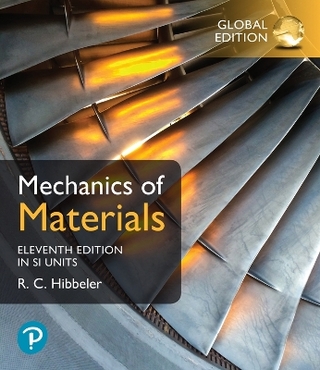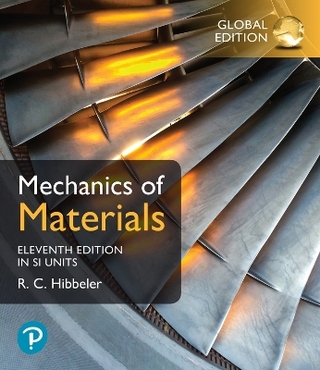
Introduction to Polymer Rheology
John Wiley & Sons Inc (Hersteller)
978-1-118-17022-9 (ISBN)
- Keine Verlagsinformationen verfügbar
- Artikel merken
Montgomery T. Shaw , PhD, is the DiBenedetto Distinguished Professor Emeritus at the University of Connecticut in Storrs, Connecticut. He is a coauthor of Introduction to Polymer Viscoelasticity , Third Edition, also published by Wiley.
1. INTRODUCTION A. Polymers and the importance of rheology B. Rheology in its simplest form Problems Suggested references, with commentary 2. STRESS A. Stress and pressure B. Organization of the stress components C. Coping with subscripts D. Typical stress tensors Appendix 2-1: Compilation of equations of motion (ssc) Appendix 2-2: Equations of motion-curvilinear quick list (ssc) Problems References 3. VELOCITY, VELOCITY GRADIENT AND RATE OF DEFORMATION A. Why velocity is simpler than location-Speedometers vs. GPS B. Velocity gradients C. Rate of deformation Appendix 3-1: Components of the rate-of-deformation tensor Appendix 3-2: Components of the continuity equation Appendix 3-3: Nomenclature and sign conventions used in popular rheology texts Problems References 4. RELATIONSHIP BETWEEN STRESS AND RATE OF DEFORMATION: THE NEWTONIAN FLUID A Material idealizations in rheology B. The Newtonian fluid Problems References 5. GENERALIZED NEWTONIAN FLUIDS - A SMALL BUT IMPORTANT STEP TOWARD A DESCRIPTION OF REAL BEHAVIOR FOR POLYMERS A. Reasons for inventing generalized Newtonian fluids - behavior of polymer melts B. Generalizing the GNF to three dimensions C. Inventing relationships for viscosity vs. shear rate D. Short primer on finding GNF parameters from data E. Summary of GNF characteristics Appendix 5-1: Fitting data with Excel Problems References 6. NORMAL STRESSES-ORDINARY BEHAVIOR FOR POLYMERS A. Introduction B. What are normal stresses C. Origin of normal stresses in simple shear D. The second normal-stress difference E. Normal-stress coefficients and empirical findings F. Transient rheological functions D. Temperature effects and superposition of steady-flow data Problems References 7. EXPERIMENTAL METHODS A. Measurement of viscosity B. Normal stresses from shearing flows C. Extensional rheology D. Specialized geometries E. Flow visualization and other rheo-optical methods F. Micro and nano rheology Appendix 7-1: Numerical derivatives Appendix 7-2: Velocity-profile correction for non-Newtonian fluids Appendix 7-3: Incorporation of slip into the velocity-profile correction- the Mooney correction Appendix 7-4: Normal stresses using the cone-and-plate geometry Appendix 7-5: Desktop rheo-optical experiment Problems References 8. STRAIN, SMALL AND LARGE A. Displacement B. Infinitesimal strain C. Hookean solids D. Finite strain E. The Lodge elastic fluid and variants F. The Cauchy strain measure G. Fixing up integral equations based on C and C -1 Appendix 8-1: The relaxation function Appendix 8-2: Constant-rate extension of the LEF Problems References 9. MOLECULAR ORIGINS OF RHEOLOGICAL BEHAVIOR A. Description of polymer molecules B. The Rouse chain-a limited description of polymer behavior C. Other chain-like models D. Dealing with entanglements E. Summary of predictions of molecular theory Problems References 10. ELEMENTARY POLYMER PROCESSING CONCEPTS A. Simple laboratory processing methods B. Elementary extrusion concepts C. A downstream process-spinning D. Summary Appendix 10-1: Densities of melts at elevated temperatures Problems References 11. QUALITY-CONTROL RHEOLOGY A. Examples of methods used by various industries B. Test precision Appendix 11-1: ASTM tests methods for rheological characterization Problems References 12. FLOW OF MODIFIED POLYMERS AND POLYMERS WITH SUPERMOLECULAR STRUCTURE A. Polymers filled with particulates B. Liquid crystallinity and rheology C. Polymers with microphase separation in melts or solutions D. Covalent crosslinking of polymers Appendix 12-1: Van 't Hoff equation applied to gelation Problems References ANSWERS TO SELECTED PROBLEMS
| Erscheint lt. Verlag | 25.1.2012 |
|---|---|
| Verlagsort | New York |
| Sprache | englisch |
| Maße | 150 x 250 mm |
| Gewicht | 666 g |
| Themenwelt | Technik ► Maschinenbau |
| Technik ► Umwelttechnik / Biotechnologie | |
| ISBN-10 | 1-118-17022-9 / 1118170229 |
| ISBN-13 | 978-1-118-17022-9 / 9781118170229 |
| Zustand | Neuware |
| Haben Sie eine Frage zum Produkt? |
aus dem Bereich


